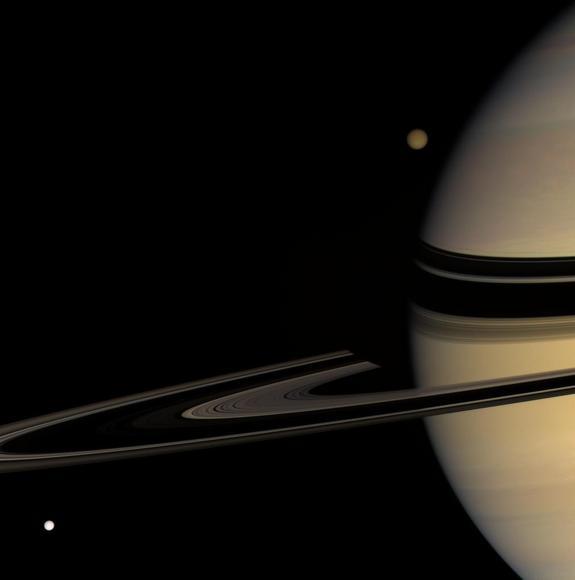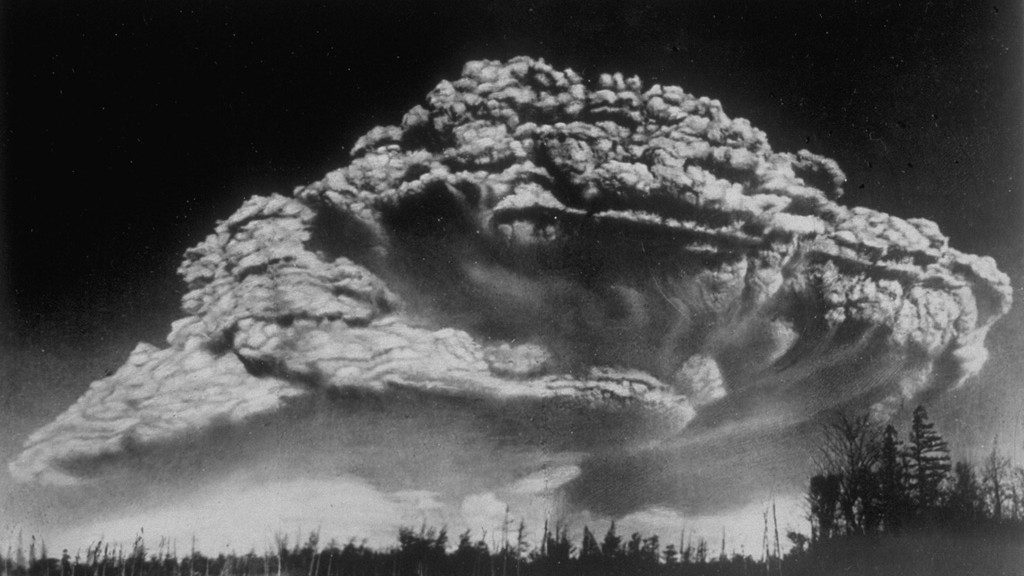Saturn's huge moon Titan just got a little more mysterious.
NASA's Cassini spacecraft has spotted an odd islandlike feature in Ligeia Mare, one of Titan's largest hydrocarbon seas. Scientists don't know what to make of the feature, which has apparently doubled in size over the past year or so, from about 30 square miles to 60 square miles (78 to 155 square kilometers).
"Science loves a mystery, and with this enigmatic feature, we have a thrilling example of ongoing change on Titan," Cassini radar team deputy leader Stephen Wall, of NASA's Jet Propulsion Laboratory in Pasadena, California, said in a statement. "We're hopeful that we'll be able to continue watching the changes unfold and gain insights about what's going on in that alien sea."
Cassini first detected the feature with its radar gear in July 2013, then saw it again in August of this year. Cassini team members are confident it's real rather than an artifact or data flaw, NASA officials said. And the Ligeia Mare "island" is apparently not the result of evaporation, since the sea's larger shoreline is relatively constant in the two observations.
So what is it? Mission scientists have offered a few possibilities, including waves, bubbles or something solid floating on the surface or suspended just below. The feature's appearance and evolution may be tied to the ongoing arrival of summer to Titan's northern hemisphere, researchers said. (Ligeia Mare, which is larger than Lake Superior, lies near the Saturn moon's north pole.)
With more than 60 known moons to go along with its famous rings, Saturn is as intriguing as it is beautiful. How much do you know about the sixth planet from the sun?
Saturn Quiz: How Well Do You Know the Ringed Planet?
Get the world’s most fascinating discoveries delivered straight to your inbox.
At 3,200 miles (5,150 km) in diameter, Titan is about 50 percent wider than Earth's moon. The huge Saturn satellite is the only body other than Earth known to host stable bodies of liquid on its surface. Titan's lakes and seas, however, are composed not of water but of hydrocarbons such as ethane and methane.
The existence of Titan's seas has led some scientists to speculate that life may be able to survive on the moon's surface. But if life exists on Titan, it would be very different than life on Earth, which is intimately tied to liquid water.
The $3.2 billion Cassini mission launched in 1997 and arrived in the Saturn system in 2004. The probe is currently operating on an extended mission that lasts until September 2017, when Cassini will plunge into Saturn's atmosphere on an intentional death dive.
Follow Mike Wall on Twitter @michaeldwall and Google+. Follow us @Spacedotcom, Facebook or Google+. Originally published on Space.com.






